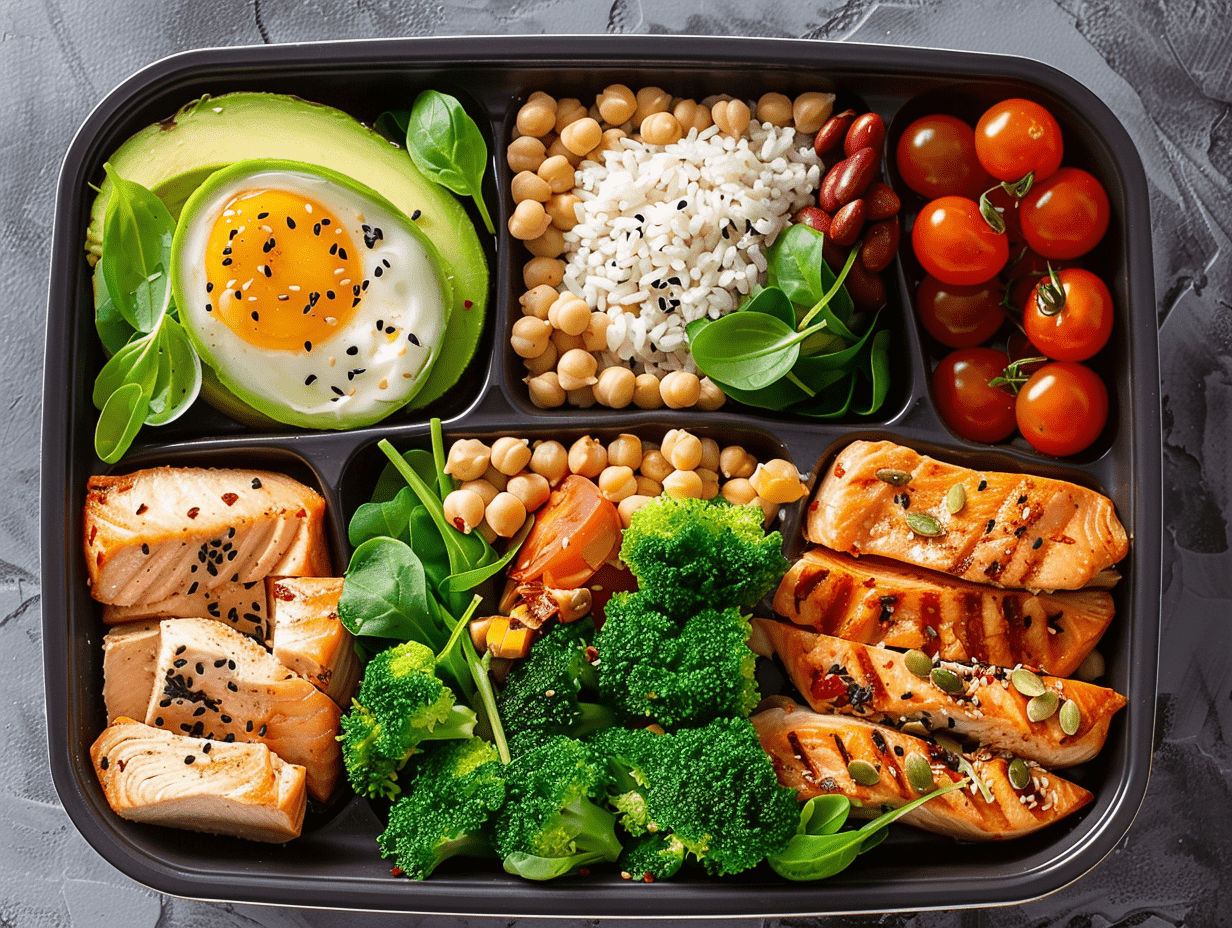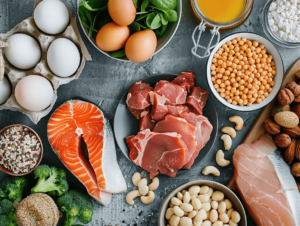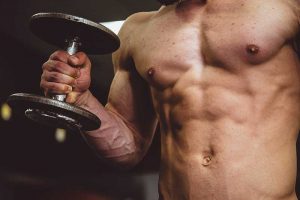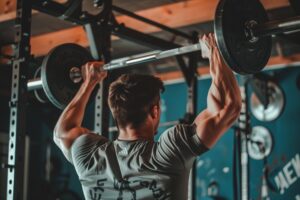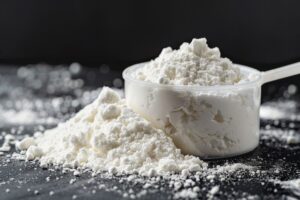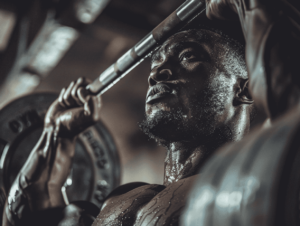Protein is a crucial micronutrient for anyone looking to build muscle and achieve their fitness goals. However, finding affordable protein sources can be challenging, especially on a tight budget.
In this article, we’ll explore various cheap protein sources and protein-rich foods that can help you meet your protein intake requirements without breaking the bank. We’ll discuss the benefits of these affordable options and provide tips on incorporating them into your muscle-building diet plan.
By the end of this article, you’ll better understand how to fuel your body with enough protein while staying within your budget. Let’s dive in and discover the best cheap protein sources for muscle growth!
Whey Protein Powder: A Concentrated and Affordable Option
Whey protein powder is popular among fitness enthusiasts and bodybuilders due to its high concentration of essential amino acids. These amino acids are crucial for muscle repair and growth, making whey protein an effective supplement for supporting your muscle-building goals.
Benefits of Whey Protein Concentrate
Whey protein concentrate is more affordable than other forms of whey protein, such as isolate or hydrolysate. Despite its lower price point, it still provides a high-quality protein source that is easily digestible and rapidly absorbed by the body.
One of the critical advantages of whey protein concentrate is its complete protein profile, meaning it contains all the essential amino acids your body needs to build and repair muscle tissue. It also provides a convenient way to boost your protein intake, as it can be easily mixed with water or added to smoothies and shakes.
Whey Protein vs. Other Protein Powders
Whey protein stands out for its fast absorption rate and high biological value compared to other protein powders, such as casein or plant-based options. This means that your body can efficiently utilize the protein in whey for muscle synthesis and recovery.
While casein protein is known for its slow-release properties, making it ideal for consumption before bed, whey protein is perfect for post-workout nutrition when your muscles need a quick influx of amino acids. Combining both whey and casein protein can provide a sustained release of amino acids throughout the day, supporting muscle growth and repair.
Protein-Rich Foods: Budget-Friendly Options for Muscle Growth
In addition to whey protein powder, numerous protein-rich foods can help support your muscle-building goals without costing a fortune. These foods include animal—and plant-based sources, providing various options to suit your dietary preferences and budget.
Animal-Based Protein Sources
Regarding affordable animal-based protein sources, options like cottage cheese, ground beef, canned tuna, ground turkey, and chicken breast are excellent. These foods are high in protein per serving and can be easily incorporated into various meals and recipes.
For example, cottage cheese is a versatile protein source that can be enjoyed independently, added to salads, or spread on whole-grain toast. Ground beef and turkey are perfect for making protein-packed burgers, meatballs, or chili, while canned tuna and chicken breast can be used in sandwiches, wraps, or as a topping for salads.
Plant-Based Protein Sources
For those following a plant-based diet or looking to incorporate more plant proteins into their meals, options like canned beans, pinto beans, Greek yogurt, pea protein, and tofu are affordable and nutrient-dense. These plant-based protein sources are high in protein and provide a variety of other essential nutrients, such as fiber, vitamins, and minerals.
Canned beans and pinto beans are incredibly versatile and can be used in various dishes, from salads and soups to tacos and burritos. Greek yogurt is an excellent source of protein and can be enjoyed as a snack, breakfast option, or substitute for sour cream in recipes.
Pea protein and tofu are excellent meat alternatives and can be used in stir-fries and curries or as a protein-rich addition to smoothies and shakes.
Combining Protein Sources for Optimal Nutrition
Combining different protein sources throughout the day is vital to ensure a balanced intake of essential amino acids and other nutrients. This can include a mix of animal—and plant-based proteins and a variety of protein-rich foods and supplements.
For example, you could start your day with a bowl of Greek yogurt topped with fruits and nuts, followed by a lunch of grilled chicken breast with pinto beans and brown rice. You could enjoy a tofu and vegetable stir-fry for dinner and then have a post-workout shake made with whey protein powder and almond milk.
Combining different protein sources will keep your meals exciting and flavorful and ensure that your body receives all the necessary building blocks for muscle growth and repair.

Balancing Protein with Healthy Fats and Carbs
While protein is essential for muscle building, it’s equally important to incorporate healthy fats and carbohydrates into your diet. These macronutrients play crucial roles in overall health, energy production, and supporting your muscle-building efforts.
The Role of Healthy Fats in Muscle Building
Healthy fats, such as those found in avocados, nuts, seeds, and olive oil, are essential for hormone production, cell membrane health, and the absorption of fat-soluble vitamins. They also provide a concentrated source of energy, which can be beneficial for high-intensity workouts and muscle recovery.
When incorporating fats into your diet, it’s essential to focus on sources of unsaturated fats and limit your intake of saturated and trans fats. Omega-3 fatty acids in fatty fish like salmon and sardines are beneficial for reducing inflammation and supporting overall health.
Carbohydrates as Fuel for Workouts
Carbohydrates are the body’s primary energy source and are crucial for fueling your workouts and replenishing glycogen stores post-exercise. Choosing complex carbohydrates, such as those found in whole grains, fruits, and vegetables, can provide sustained energy throughout the day and support your muscle-building goals.
Consuming carbohydrates before and after your workouts can help optimize performance and recovery. Pre-workout carbs can provide the energy needed to power through intense training sessions, while post-workout carbs can help replenish glycogen stores and support muscle repair and growth.
Creating a Balanced Meal Plan
Creating a balanced meal plan that includes adequate amounts of protein, healthy fats, and carbohydrates is essential to maximize your muscle-building potential. A general guideline is to aim for a macronutrient ratio of 30-40% of calories from protein, 30-40% from carbohydrates, and 20-30% from healthy fats.
When creating your meal plan, focus on whole, minimally processed foods and incorporate a variety of nutrient-dense options. This can include lean proteins like chicken, fish, and tofu; complex carbohydrates like brown rice, quinoa, and sweet potatoes; and healthy fats from sources like avocados, nuts, and olive oil.
Remember to stay hydrated and listen to your body’s hunger and fullness cues. By providing your body with the right balance of nutrients and energy, you’ll be well on your way to achieving your muscle-building goals.
Maximizing Protein Intake on a Budget
Building muscle on a budget can be challenging, but with the right strategies and creativity, you can maximize your protein intake without overspending. Here are some tips to help you get the most out of your protein sources while keeping costs low or resorting to alternatives such as protein pills.
Meal Planning and Prep
One of the most effective ways to save money and ensure you’re getting enough protein is to plan and prepare your meals in advance. By dedicating some time each week to meal planning and prep, you can take advantage of bulk buying, cook in larger quantities, and have protein-rich meals ready when needed.
Start by making a list of protein-rich foods that fit your budget and preferences, and then create a meal plan that incorporates these items. You can also prepare large batches of meals like chili, stews, or casseroles, which can be portioned out and frozen for later use.
Buying in Bulk
Purchasing protein sources in bulk can often lead to significant savings compared to buying smaller quantities. Look for deals on chicken breast, ground beef, or canned fish at your local grocery store or warehouse club.
When buying in bulk, properly store and freeze any excess food to minimize waste and ensure a steady supply of protein-rich options. Also, consider splitting bulk purchases with friends or family members to reduce costs further and avoid having too much food at hand.
Utilizing Affordable Protein Sources
Incorporating various affordable protein sources into your diet is critical to maximizing your protein intake on a budget. Some budget-friendly options include:
- Eggs: A dozen eggs is an inexpensive and versatile protein source that can be prepared in numerous ways, such as hard-boiled, scrambled, or as an omelet.
- Canned fish: Tuna, salmon, and sardines are nutrient-dense and affordable options that can be easily added to salads, sandwiches, or pasta dishes.
- Legumes: Beans, lentils, and peas are cheap, plant-based protein sources high in fiber and other essential nutrients.
- Greek yogurt: Plain Greek yogurt is a cost-effective and protein-rich option that can be enjoyed independently or substituted for sour cream or mayonnaise in recipes.
- Whole grains: Quinoa, oats, and brown rice are inexpensive sources of complex carbohydrates that also provide some protein.
By incorporating these and other affordable protein sources into your meal plan, you can get enough protein to support your muscle-building goals without breaking the bank.

Example Cheap Protein Meals
Breakfast: Scrambled Eggs with Greek Yogurt and Fruit
Scrambled Eggs with Greek Yogurt and Fruit
- Scrambled Eggs: 3 large eggs (18g protein)
- Greek Yogurt: 1 cup plain Greek yogurt (10g protein)
- Fruit: 1 medium apple or banana
Description: Start your day with a protein-packed breakfast that’s both delicious and nutritious. The scrambled eggs are fluffy and savory, providing a warm and satisfying start to your morning. Pairing the eggs with creamy Greek yogurt adds a delightful tanginess and a smooth texture, complementing the eggs perfectly.
The fruit, whether a crisp apple or a sweet banana, adds a refreshing sweetness that balances the meal. This breakfast energizes you for the day ahead and ensures you kick off with a substantial protein boost.
Mid-Morning Snack: Sunflower Seeds and Milk
Sunflower Seeds and Milk
- Sunflower Seeds: 1 ounce (6g protein)
- Skim Milk: 1 cup (8g protein)
Description: Enjoy sunflower seeds’ crunchy and nutty flavor for a mid-morning snack. These tiny seeds pack a punch of protein and healthy fats, keeping you satiated until lunch.
This snack is refreshing and nutritious, paired with a cold glass of skim milk. The combination of the seeds and milk provides a good mix of textures and tastes, making it a pleasant and straightforward way to maintain your protein intake throughout the day.
Lunch: Tuna Salad with Beans
Tuna Salad with Beans
- Canned Tuna: 1 can (20g protein)
- Kidney Beans: 1 cup (15g protein)
- Diced Tomatoes: Add for flavor and nutrients
Description: This hearty and flavorful tuna salad with beans is perfect for lunch—the tuna’s rich, savory flavor pairs wonderfully with the creamy texture of kidney beans.
Adding diced tomatoes introduces a juicy, fresh element that lightens the dish. This meal is packed with protein, vibrant colors, and textures, delighting your taste buds and eyes. It’s a filling and satisfying lunch that energizes you for the afternoon.
Afternoon Snack: Regular Yogurt with Nuts
Regular Yogurt with Nuts
- Regular Yogurt: 1 cup (10g protein)
- Almonds: 1 ounce (6g protein)
Description: Treat yourself to creamy yogurt paired with crunchy almonds in the afternoon. The yogurt’s smooth, mild flavor perfectly complements the almonds’ rich, nutty taste.
This combination provides a satisfying blend of textures, with the yogurt’s creaminess balancing the almonds’ crunch. It’s a delightful snack that curbs your hunger and gives you a significant protein boost to keep you going through the rest of the day.
Dinner: Chicken Breast with Brown Rice and Pinto Beans
Chicken Breast with Brown Rice and Pinto Beans
- Grilled Chicken Breast: 6 ounces (38g protein)
- Brown Rice: 1 cup cooked (5g protein)
- Pinto Beans: 1 cup cooked (15g protein)
Description: Dinner is a delicious and balanced meal featuring grilled chicken breast, brown rice, and pinto beans. The chicken breast is juicy and tender, seasoned to perfection, providing a rich source of lean protein.
The nutty, slightly chewy texture of brown rice pairs excellently with the creamy, hearty pinto beans. This meal is packed with protein and satisfying flavors and textures. It’s a wholesome and enjoyable way to end your day, ensuring your muscles get the nutrients they need for recovery and growth.
Evening Snack: Whey Protein Shake
Whey Protein Shake
- Whey Protein Powder: 1 scoop mixed with water or milk (24g protein)
Description: Cap off your day with a delicious whey protein shake. This shake is quick and easy to prepare, offering a smooth, creamy texture that feels like a treat.
Whether mixed with water or milk, the whey protein powder provides a rich, satisfying flavor that can be customized with your favorite fruits or a spoonful of peanut butter. This evening snack satisfies your sweet tooth and ensures you end the day with a substantial protein boost, supporting muscle repair and growth overnight.
Totals for The Day
The daily protein intake based on the provided meal plan is 175 grams. Here’s a breakdown of the protein content for each meal:
- Breakfast: 28 grams (Scrambled eggs with Greek yogurt and fruit)
- Mid-Morning Snack: 14 grams (Sunflower seeds and skim milk)
- Lunch: 35 grams (Tuna salad with beans)
- Afternoon Snack: 16 grams (Regular yogurt with nuts)
- Dinner: 58 grams (Chicken breast with brown rice and pinto beans)
- Evening Snack: 24 grams (Whey protein shake)
This total ensures a substantial and balanced protein intake throughout the day, supporting muscle building and recovery.
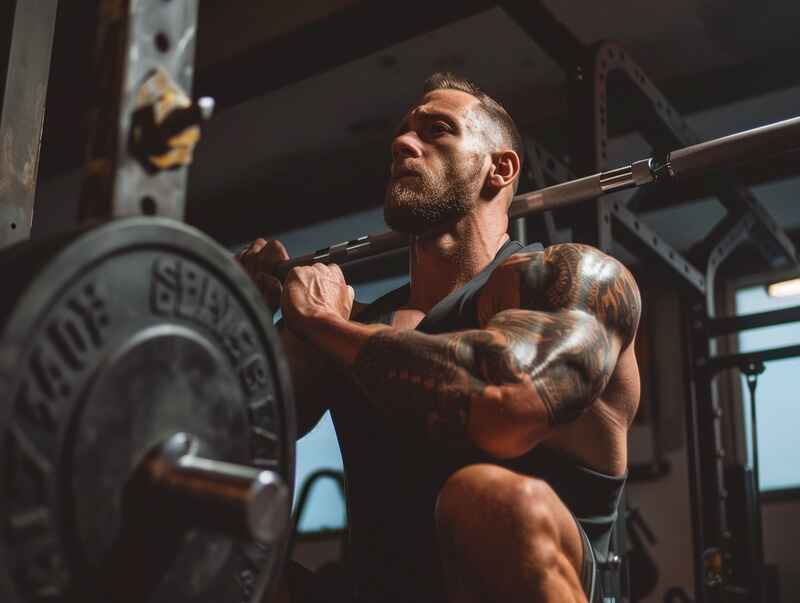
Frequently Asked Questions
Should You Eat Protein Before Bed
This is a fantastic question, and we answer it in detail in our article on consuming protein at bedtime.
How Can I Get 100 Grams of Protein a Day Cheap?
To get 100 grams of protein a day on a budget, focus on high-protein foods that are affordable and easily accessible. Here’s a sample plan:
- Breakfast: Scrambled eggs (3 large eggs provide about 18 grams of protein) and a serving of skimmed milk (8 grams of protein per cup).
- Snack: Sunflower seeds (1 ounce provides about 6 grams of protein).
- Lunch: Tuna salad (1 can of tuna fish provides 20 grams of protein) mixed with diced tomatoes.
- Snack: Regular yogurt (1 cup provides 10 grams of protein) and hemp seeds (1 ounce offers 10 grams of protein).
- Dinner: Chicken breast meat (6 ounces provides about 38 grams of protein).
These foods provide high protein and maintain a low-fat content, helping you stay within your grocery budget while achieving the desired grams of protein.
How can you easily get 200g of protein for cheap?
Achieving 200 grams of protein a day on a budget is possible by incorporating high-protein foods at low cost:
- Breakfast: Scrambled eggs (5 large eggs provide about 30 grams of protein) and a serving of organic milk (8 grams of protein per cup).
- Snack: Sunflower seeds (2 ounces provide 12 grams of protein).
- Lunch: Tuna salad (2 cans of tuna fish provide 40 grams of protein) mixed with kidney beans (1 cup provides about 15 grams of protein).
- Snack: Regular yogurt (2 cups provide about 20 grams of protein).
- Dinner: Chicken breast meat (8 ounces provides about 50 grams of protein) and black beans (1 cup provides about 15 grams of protein).
- Evening Snack: Skimmed milk (2 cups provide about 16 grams of protein).
This plan ensures you get high protein content from various sources while being budget-friendly.
How to Get 150g of Protein a Day Cheap?
Here’s a simple and affordable plan to get 150 grams of protein a day:
- Breakfast: Scrambled eggs (4 large eggs provide about 24 grams of protein) and a serving of skim milk (8 grams of protein per cup).
- Snack: Sunflower seeds (1.5 ounces provide about 9 grams of protein).
- Lunch: Tuna salad (1 can of tuna fish provides 20 grams of protein) mixed with kidney beans (1 cup provides about 15 grams of protein).
- Snack: Regular yogurt (1 cup contains 10 grams of protein).
- Dinner: Chicken breast meat (6 ounces provides about 38 grams of protein) and black beans (1 cup provides about 15 grams).
- Evening Snack: Skim milk (2 cups provide about 16 grams of protein).
This approach helps you achieve your protein goals by providing a variety of high-protein foods while managing your grocery budget.
What is a High Protein Affordable Meat?
Chicken breast meat is one of the best high-protein, affordable meats. It is a rich source of protein, providing about 26 grams of protein per 3-ounce serving, with a relatively low-fat content. Compared to other meats, chicken breast is budget-friendly and versatile for various recipes.
Additionally, it has a mild flavor that can be easily seasoned or marinated to suit different tastes. Other budget-friendly seafood options like tuna fish and certain fresh fish like tilapia also provide high protein with low fat intake.
Incorporating these high-protein foods into your diet can help you maintain a high protein intake without overspending your grocery budget.
Conclusion: Achieving Your Protein Goals on a Budget
Building muscle on a budget is achievable with the proper knowledge, planning, and dedication. Focusing on cheap protein sources like whey protein powder, eggs, canned fish, and legumes can maximize your protein intake without overspending.
You should also research using the following article to understand how much protein you need to consume.
Remember to incorporate various protein-rich foods, including animal and plant-based sources, to ensure you get all the essential amino acids your body needs for muscle growth and repair. Balancing your protein intake with healthy fats and complex carbohydrates will further support your muscle-building efforts and overall health.
Implementing strategies like meal planning, bulk buying, and utilizing affordable protein sources can help you create a sustainable and effective muscle-building diet plan that fits your budget. With consistency and patience, you’ll be well on your way to achieving your fitness goals and building the strong, healthy body you desire.



